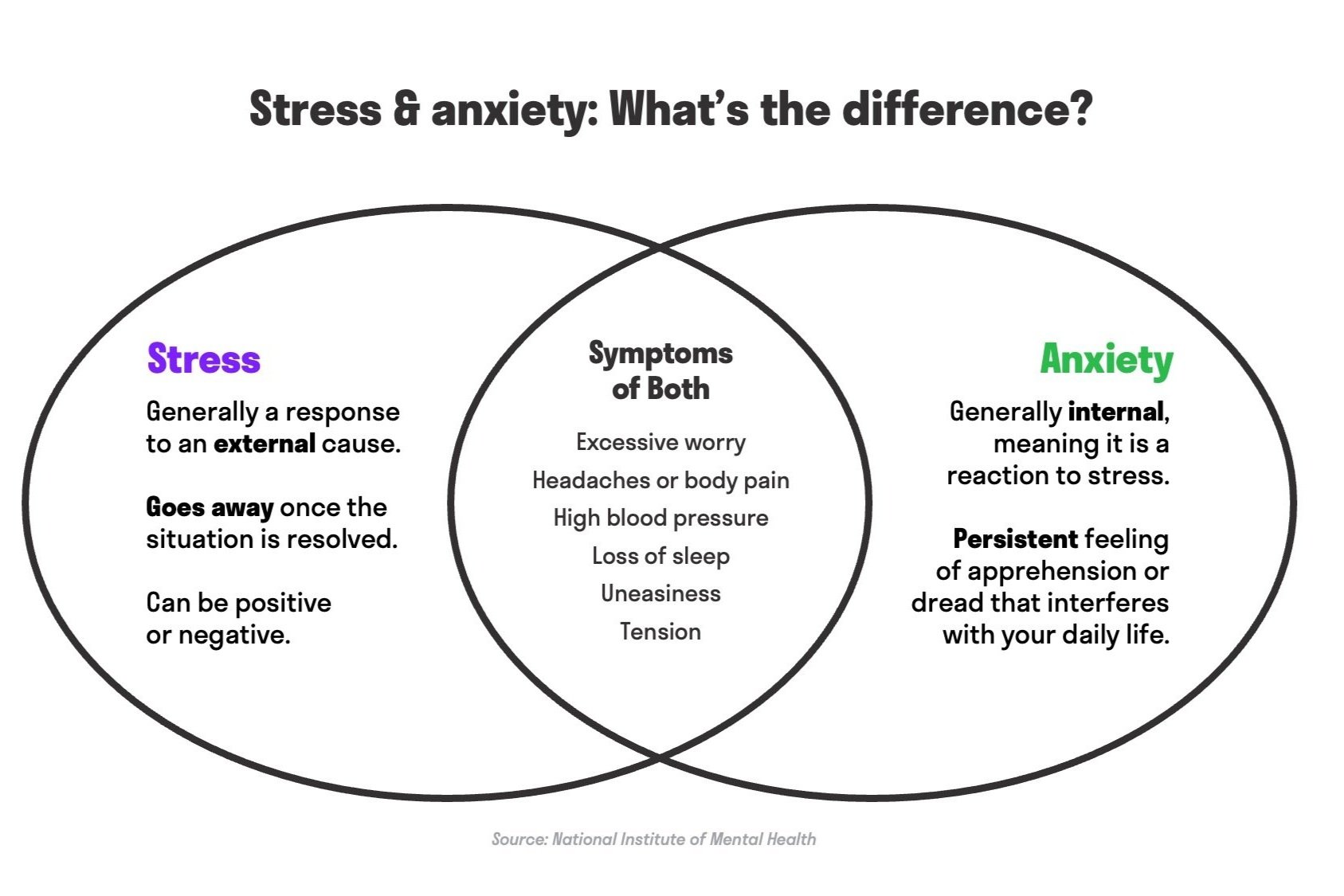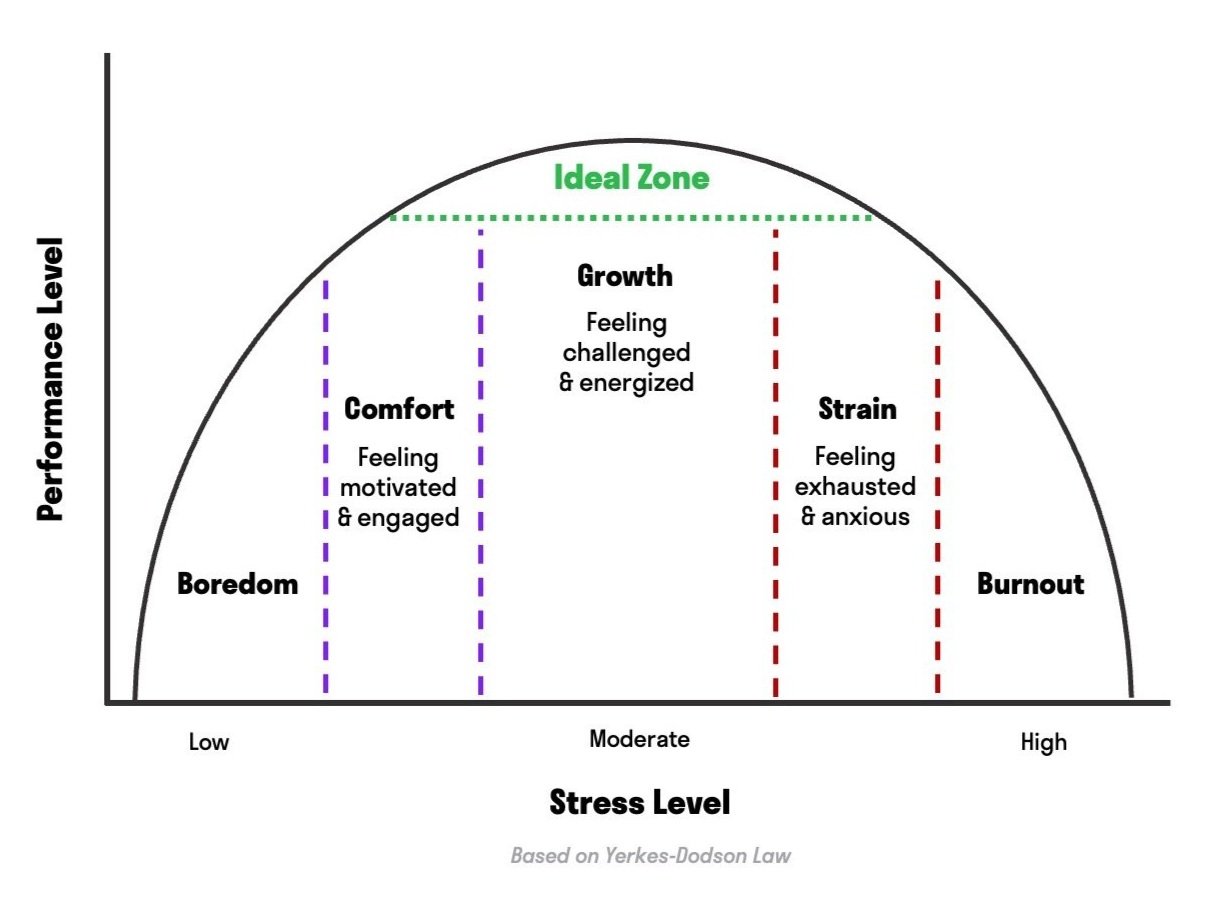Managing Stress & Anxiety at Work to Avoid Burnout
Stress seems to be the headline of modern life. Because we’re all feeling it—84% of adults say they experienced at least one emotion tied to prolonged stress in the prior 2 weeks, with the most common being anxiety at 47%, sadness at 44%, and anger at 39% (American Psychological Association).
Stress is our collective enemy. We talk about it all the time, but we do not seem to do much about it. That’s why we keep talking about it. Perhaps we do not know what to do or how to do it. To know what to do and how, we have to first understand why stress occurs and how to recognize the difference between good and bad stress. (Yes, both exist).
First, let’s talk about the relationship between stress and anxiety. Stress is generally a response to an external cause. Anxiety is generally internal, meaning it is a reaction to stress. Stress goes away once the situation is resolved, whereas anxiety is a persistent feeling of apprehension or dread that interferes with daily life.
Below are a few ways stress and anxiety can present at work…
Physical pains
Struggling to concentrate
Not feeling engaged in work
Drop in performance
Overreacting to situations
Focusing on the negative
Missed deadlines
These consequences of bad stress make every day and every task harder. When we recognize these thoughts, feelings and behaviors in ourselves or in our colleagues, that means we have gone over to the strain and burnout end of the stress curve. You see, to feel motivated and experience growth, we need to have a healthy level of stress. Experiencing too much stress is where everything breaks down.
Developing awareness around our own stress and anxiety levels and their triggers is the first step to managing them better. Take 5 minutes and do a little self check by asking yourself the below questions:
Stress: How stressed are you at work right now?
Do you feel you have a never-ending task list you just can’t complete?
Do you feel you have little control over important aspects of your work?
Do you feel upset or angry over unexpected requests / incidents?
Anxiety: How anxious are you at work right now?
Do you find yourself having trouble controlling your worries?
Do you feel nervous, on edge, or irritable?
Do you feel the need to always be perfect?
Reality Check
On a scale of 0 (least) to 10 (most), where do you stand today when it comes to being stressed or anxious at work? What makes you feel this way?
Ask yourself these questions regularly. And let’s tackle the big question: How do we reset from strain or burnout? First, talk about it with others. If you’re a leader in the workplace, make space on your teams and work groups to talk honestly about the stress and anxiety your colleagues are feeling and explore triggers and solutions together. If not in leadership, bring your concerns to your leader. This can be hard. Frame the discussion using noticing and naming. “I’ve noticed my stress (and/or anxiety) levels are up and I do not want my wellbeing or my work to suffer.” Then name the drivers or triggers. For example, “Every project I’m leading is on the same timeline and it feels impossible to give each of them their due attention.” Then invite brainstorming solutions together. For example, “Is anyone available to contribute to some of these projects so that I can better prioritize my time and effort?” Every action starts with conversation.
Here are some ways to reduce stress and anxiety beyond managing workload:
Notice the difference between good & bad stress (even write them down)
Develop a positive self-talk habit (you are a valuable colleague and high performer)
Establish boundaries (stop sending those late-night emails)
Take time to recharge (request time off when you need it and even before you really need it!)
Prioritize exercise and get enough sleep (start small, take a daily walk)
Practice mindfulness (take time to eat your lunch with pleasure—smell it, savor it, feel the taste)
There is no quick fix to make all bad stress or anxiety disappear. But the more we bring awareness to how we are feeling and the forces driving those feelings, the better equipped we are to do something about it, for ourselves and in collaboration with those around us.








